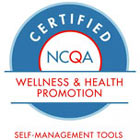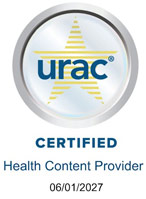Does this test have other names?
RMSF, Rocky Mountain spotted fever antibodies, indirect immunofluorescence antibody (IFA) assay for immunoglobulin G (IgG)
What is this test?
Rocky Mountain spotted fever (RMSF) testing includes a blood sample used to look for proteins (antibodies) that the body makes to fight RMSF infections. RMSF is a serious bacterial infection caused by a bite from an infected tick. In most people, antibodies can't be found until at least a week after infection.
A blood sample is taken about 1 week after symptoms appear and again 2 to 4 weeks later.
Why do I need this test?
You may need this test if your doctor wants to confirm a diagnosis of RMSF and to see how well treatment is working. Symptoms of RMSF include:
-
A fever.
-
A rash. This can happen 2 to 5 days after the fever. But some people never have a rash.
-
Headaches.
-
Muscle pain.
-
Nausea.
-
Vomiting.
-
Belly pain.
-
Lack of appetite.
What other tests might I have along with this test?
You might need other blood tests. These might include a complete blood cell count and a chemistry panel. A low platelet count, low sodium level, or higher liver enzymes could mean RMSF. If you have a skin rash, your doctor may order a skin biopsy to look for bacterial infection in the cells that line your blood vessels.
What do my test results mean?
Test results may vary depending on your age, gender, health history, and other things. Your test results may be different depending on the lab used. They may not mean you have a problem. Ask your doctor what your test results mean for you.
If your first test results are negative, you still might be infected. A second test will likely be done a few weeks after the first one. It's critical to start treatment right away, so your doctor may suggest treatment even if your first results are negative. They will have you repeat the test in a week or two.
Doctors look for a rise in the antibodies. If the second test shows a significant rise in antibodies, it can confirm that you have RMSF.
The antibodies may stay at higher levels for months or even years after infection.
How is this test done?
The test is done with a blood sample. A needle is used to take blood from a vein in your arm or hand.
Does this test pose any risks?
Having a blood test with a needle carries some risks. These include bleeding, infection, bruising, and feeling lightheaded. When the needle pokes your arm or hand, you may feel a slight sting or pain. Later, the site may be sore.
What might affect my test results?
Antigens may be present in your blood if you have been exposed to related organisms. Antibiotic treatment also can affect your test results.
How do I get ready for this test?
You don't need to get ready for this test. Be sure your doctor knows about all medicines, herbs, vitamins, and supplements you are taking. This includes medicines that don't need a prescription and any illegal drugs you may use.
Author: Orenstein, Beth W
© 2000-2025 The StayWell Company, LLC. All rights reserved. This information is not intended as a substitute for professional medical care. Always follow your healthcare professional's instructions.
